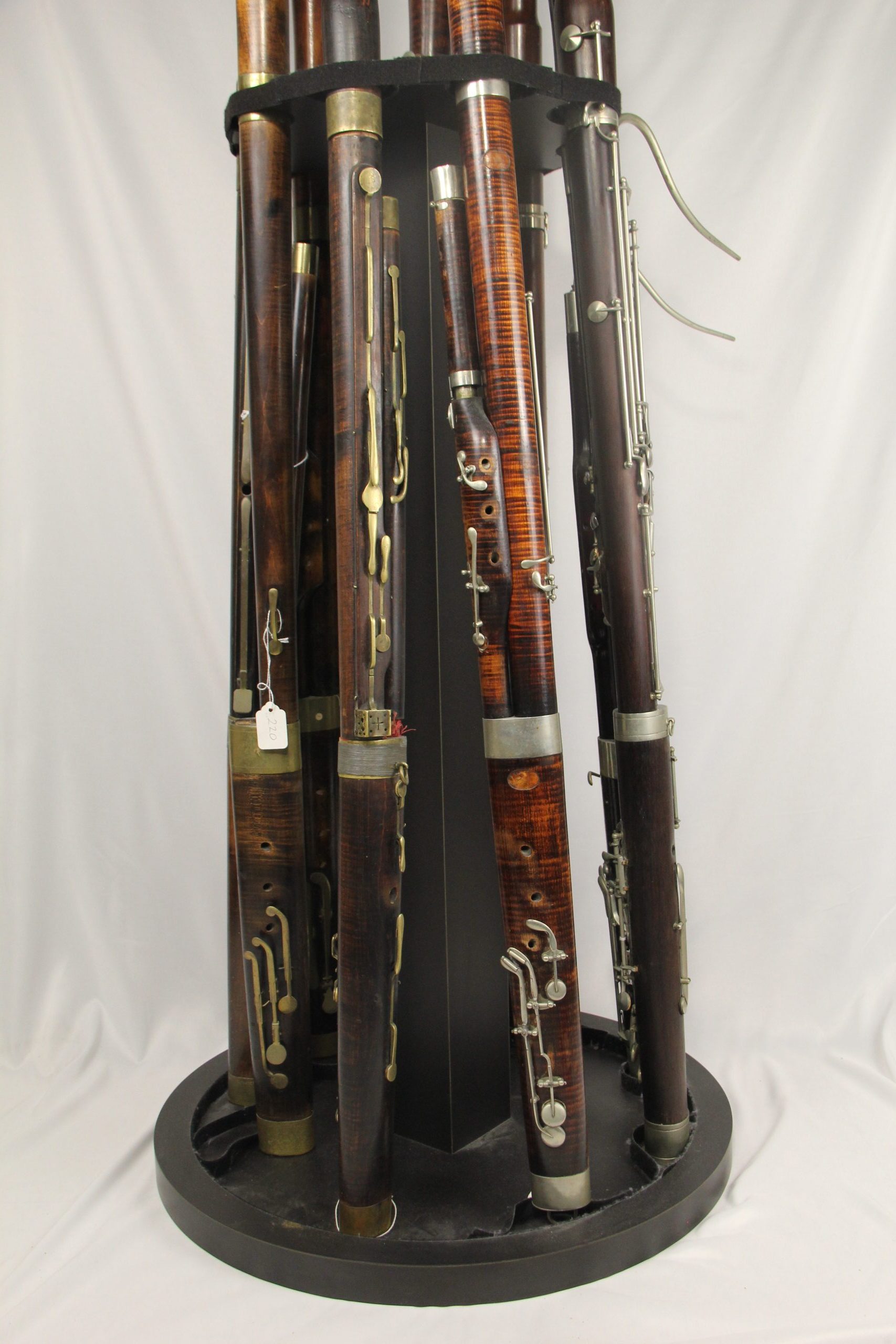5-Key Bassoon
Details
- Origin: Germany
- Date Made: 1780 -1800
- Collection: E 218
Description:
5 flat, heavy, brass keys with octagonal flaps type “M” and “N” (Young). Bb’, Eb (for L-4 on long joint), D, F, G# all mounted in brass saddles. Springs attached to keys. 6 open finger holes and 2 thumb holes. Material: maple. Brass ferrules. Bell constricted at waist. Tube length: 206.9 cm. Bore: Conical. Top of wing, 1.1 cm.; bottom of wing, 1.8 cm.; bottom of long joint, 2.3 cm.; top of long joint, 3.0 cm. Condition: generally good. Crook missing. Pinned crack in butt. Bell with brass socket shim and rim repair.
This is a bassoon intended for playing Mozart. The butt foot plate is retained by long pins, as often seen on Germanic instruments of this period. The touch for the F key may be a replacement or was formerly a fishtail type with the left branch removed.
Four-key models of the early bassoon emerged sometime around 1700, a fifth key being added soon after in the first half of the 18th century. Models with this fifth key for the low Eb were made in Germany, France, and England, prominent makers including J.H. Eichentopf (c. 1678-1769), Prudent Thieriot (1732-1786), and Thomas Stanesby, Jr. (1668-1734), among others.
Sources
- New World Encyclopedia contributors. “Bassoon.” New World Encyclopedia, June 17, 2019. https://www.newworldencyclopedia.org/entry/Bassoon.





